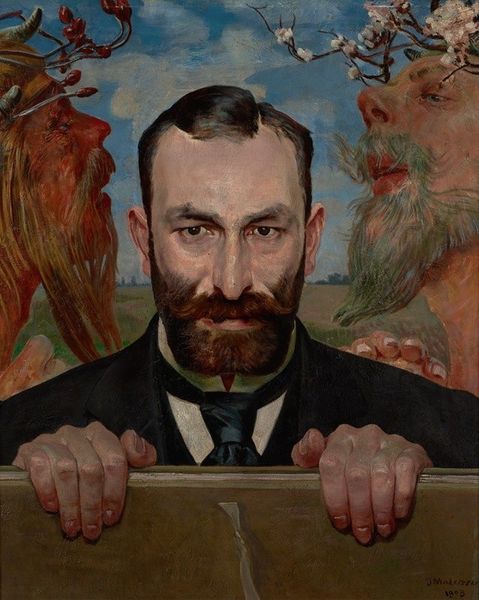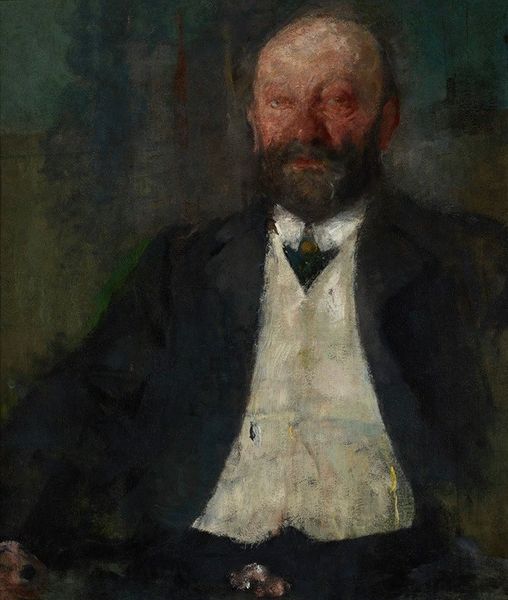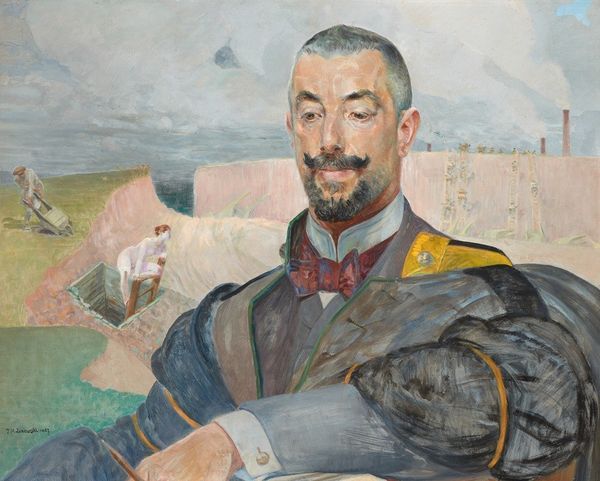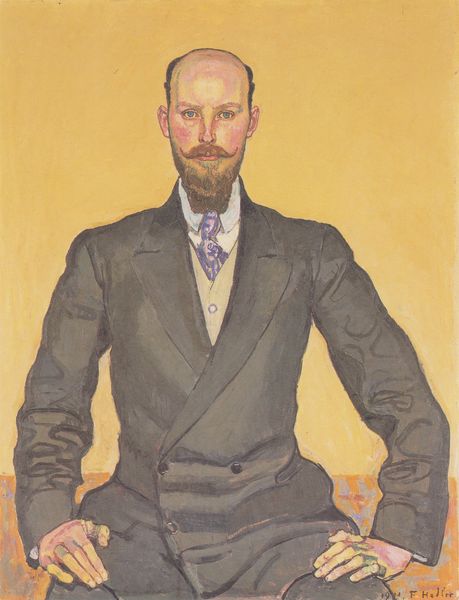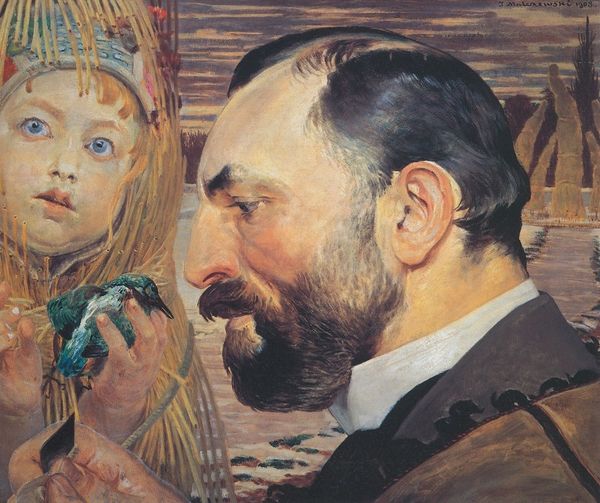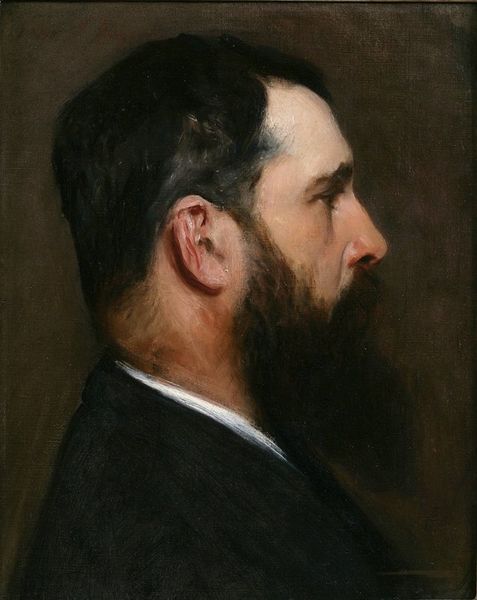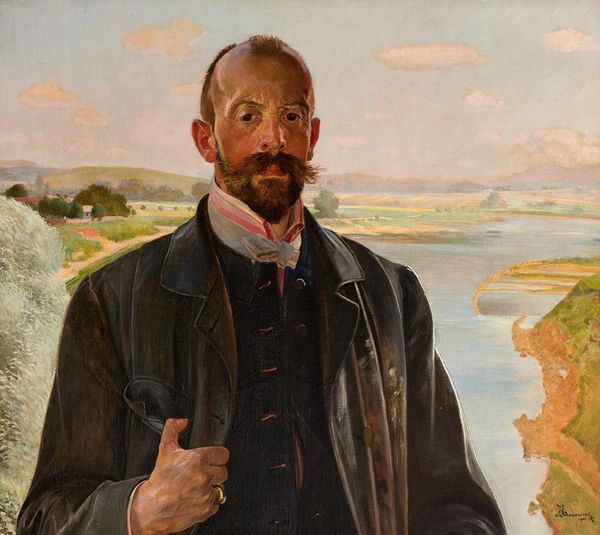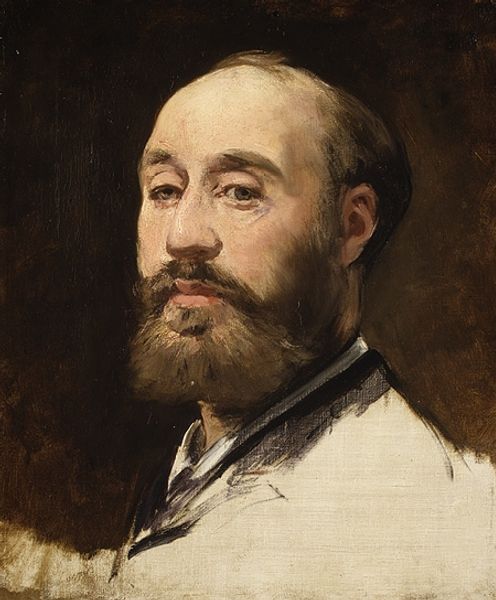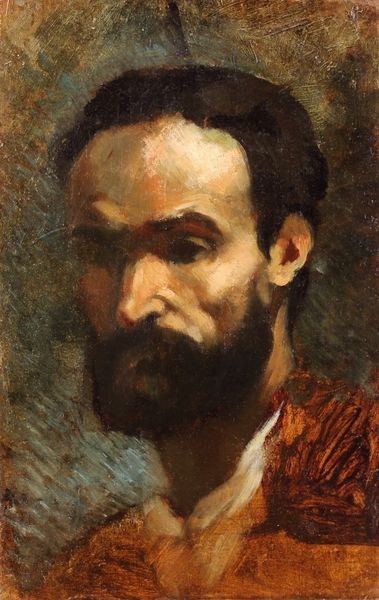
Copyright: Public Domain: Artvee
Curator: Leon Wyczółkowski painted "Portrait of Feliks Jasieński in a Blue Kaftan" in 1911. It's an oil on canvas, capturing Jasieński in what appears to be a moment of contemplative study. What catches your eye here? Editor: Immediately, the visual symbolism just jumps out! The kaftan, its patterns, the textures... there’s such richness in this depiction. The book he holds too – do we know what that might be? Curator: Indeed. Jasieński, a prominent art collector and critic, was known for his fascination with Japanese art. The kaftan and background designs clearly echo this passion, positioning him within a wider context of Orientalism in early 20th-century European art. The book is assumed to feature Japanese drawings from Jasieński’s vast collection, but given the lack of clarity this interpretation depends on the painting's sociohistorical contexts. Editor: Ah, Japanese art, that unlocks another layer. So, the dragon motifs, the floral elements – these become markers of cultural appropriation, a deliberate presentation of Jasieński's identity through collected artifacts. It's about displaying acquired taste, isn't it? An Orientalist fantasy built from curated possessions. Curator: Precisely. Furthermore, Wyczółkowski’s Impressionistic brushstrokes are visible here too, capturing fleeting impressions while revealing inherent issues around class, consumption, and colonial power relations in that historical moment. The looseness is almost a critique on the collecting mentality...or a romantic view depending on one’s social location. Editor: The intensity of the blues is what stays with me—the way the robe dominates the frame, it's almost overwhelming. The painting style feels intentional; the softness blurs those cultural lines, and the robe acts as a symbol itself, transforming him into a collector rather than simply portraying one. It asks what and who gets to be ‘art.’ Curator: Definitely. This image serves not just as a likeness but also acts as a statement regarding shifting artistic perspectives around class, artistic taste and collecting behaviors. Editor: It's powerful to see how Wyczółkowski used familiar iconographies to express the portrait, both aesthetically and conceptually. Curator: I find that its engagement with pressing contemporary issues through historical lens also provides insights relevant in today's world.
Comments
No comments
Be the first to comment and join the conversation on the ultimate creative platform.
